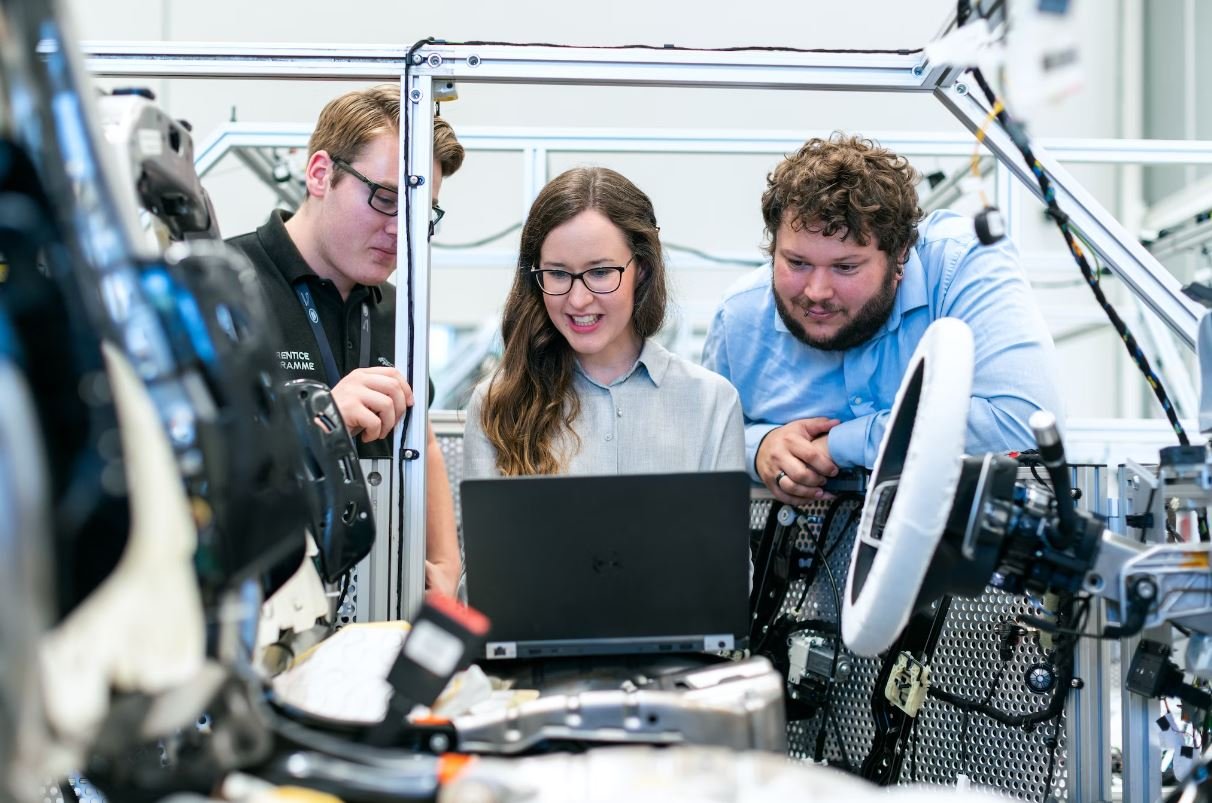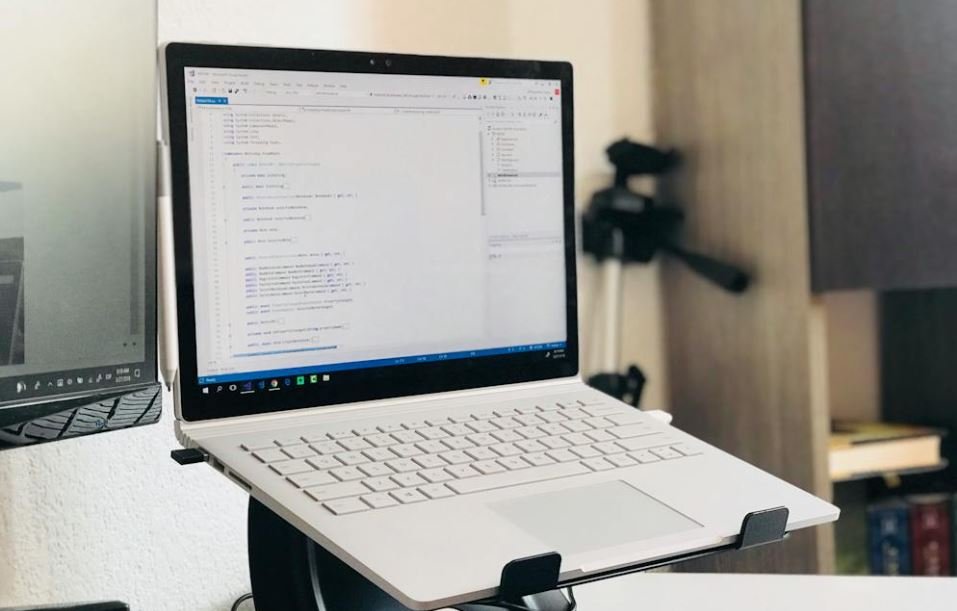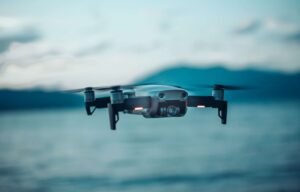How Deepfake Poses a Cybersecurity Threat
With the rapid advancement of technology, deepfake has emerged as a major cybersecurity threat. Deepfake refers to the use of artificial intelligence and machine learning algorithms to create manipulated videos or audios that appear to be real. This deceptive technology poses a significant risk to individuals, organizations, and even national security.
Key Takeaways
- Deepfake technology uses AI and ML to create realistic, but fake, videos or audios.
- Deepfakes pose a serious threat to individuals and organizations, including potential reputational damage.
- There is increasing concern about the potential use of deepfakes in cybercrime and political manipulation.
The Growing Threat of Deepfake
**Deepfake** technology has improved significantly in recent years, making it increasingly difficult to differentiate between real and fake content. *Deepfakes can be created by anyone with access to the necessary tools and data, potentially leading to harmful consequences.*
The Impact on Individuals and Organizations
Deepfakes pose a significant risk to both individuals and organizations. From a personal standpoint, individuals can fall victim to identity theft, blackmail, or damage to their reputation due to the creation of deepfake content. **Organizations are also susceptible to reputational damage, financial loss, and security breaches,** as deepfakes can be used to impersonate executives or employees in order to deceive others or gain unauthorized access to sensitive information. *This can have far-reaching consequences for both individuals and businesses.*
The Use of Deepfake in Cybercrime and Political Manipulation
There is growing concern regarding the potential use of deepfakes in cybercrime and political manipulation. *The ability to create convincing fake videos or audios can be exploited to spread false information, manipulate public opinion, or even incite violence.* Deepfakes could be used to impersonate key figures or politicians, creating chaos or damaging reputations. **This technology has the potential to undermine trust in institutions, elections, and even democratic processes.** It is crucial to be aware of the implications and take proactive measures to address this emerging threat.
Prevention and Mitigation
- Recognize the signs of deepfake content, such as unnatural movements, inconsistencies, or audio discrepancies.
- Implement **multi-factor authentication** and strong security measures to prevent unauthorized access to sensitive information.
- Educate individuals and employees about deepfakes and the potential risks associated with them.
- Develop and deploy deepfake detection tools and algorithms to identify and mitigate the spread of malicious content.
Table 1: Famous Deepfake Cases
| Date | Case |
|---|---|
| 2018 | FaceSwap app used to create deepfake pornographic videos involving celebrities. |
| 2019 | A deepfake video of Facebook CEO Mark Zuckerberg went viral, raising concerns about the spread of manipulated content. |
| 2020 | Deepfakes used during U.S. presidential campaigns to spread misinformation and manipulate public opinion. |
Combating the Threat
Addressing the deepfake threat requires a collaborative effort involving technology developers, policymakers, and individuals. Governments and regulatory bodies need to establish guidelines and regulations to mitigate the potential harms of deepfakes. **Investing in research and development of deepfake detection technologies** and promoting public awareness will play a significant role in combating this evolving threat. *Only through a comprehensive approach can we effectively safeguard against the damaging consequences of deepfakes.*
Table 2: Deepfakes in Various Industries
| Industry | Potential Impact |
|---|---|
| Politics | Manipulation of public opinion, discrediting of political figures. |
| Finance | Impersonation of executives, misleading stock market behavior. |
| Entertainment | Damage to celebrity reputation, unauthorized use of talent likeness. |
Conclusion
As deepfake technology continues to evolve, the threat it poses to cybersecurity grows more severe. With the potential to deceive individuals, organizations, and even influence political landscapes, deepfakes are an alarming risk. Vigilance, public awareness, and technological advancements in detection are vital to mitigate this threat. *By staying informed and taking proactive measures, we can effectively safeguard against the repercussions of deepfake technology.*
Table 3: Common Deepfake Detection Techniques
| Detection Technique | Description |
|---|---|
| Facial Analysis | Comparing the subject’s facial features with known reference data to identify anomalies, such as inconsistent facial expressions or unnatural movements. |
| Voice Analysis | Using advanced algorithms to assess voice patterns and compare them to a known reference to detect potentially manipulated audio. |
| Metadata Analysis | Examining metadata associated with the video or audio file, such as creation date, location, or editing software, to identify potential indicators of manipulation. |

Common Misconceptions
Misconception 1: Deepfakes are only used for harmless entertainment purposes.
- Deepfakes are not limited to entertainment purposes only; they can also be used for malicious activities.
- Creators of deepfakes can use them to spread misinformation, commit fraud, or manipulate public opinion.
- Deepfakes can be weaponized to tarnish someone’s reputation, incite violence, or blackmail individuals.
Misconception 2: Identifying deepfakes is easy and straightforward.
- Deepfake technology is continuously evolving, making it harder to detect by both humans and automated systems.
- Advanced deepfake techniques incorporate artificial intelligence to generate highly convincing and realistic videos.
- Without proper forensic analysis or specialized tools, distinguishing deepfakes from genuine videos can be challenging.
Misconception 3: Deepfakes only target high-profile individuals.
- While celebrities and politicians may be prime targets, deepfakes can be used to target any individual, regardless of their social status.
- Anyone can become a victim of deepfake cyberattacks, such as revenge porn or identity theft.
- Deepfakes can be used to impersonate people, tricking their friends, family, or colleagues into divulging sensitive information.
Misconception 4: Deepfakes are a distant threat and not a current concern.
- The rise of deepfake technology has accelerated in recent years, increasing the immediacy and severity of the cybersecurity threat it poses.
- Deepfakes have already been used in various real-world instances, including spreading political propaganda and manipulating public discourse.
- As deepfake technology becomes more accessible and easier to use, the frequency and potential damage caused by deepfake attacks are likely to increase.
Misconception 5: Legislation and regulations will effectively combat the deepfake threat.
- While legal measures are important, they alone cannot address the growing threat of deepfakes in cyberspace.
- Creating effective legislation to tackle deepfake-related issues is challenging, as it requires balancing freedom of expression with the need for protecting individuals and society.
- Technology and research play crucial roles in developing advanced detection methods and countermeasures to combat deepfake threats effectively.

Table Title: Top 5 Deepfake Applications
Deepfake technology has a wide range of applications. This table showcases the top five sectors where deepfake technology is currently being utilized.
| Application | Description |
|---|---|
| Entertainment | Celebrities and historical figures recreated for movies and TV shows. |
| Politics | Political speeches and debates altered to deceive or misinform. |
| Pornography | Adult content manipulated to feature the likeness of someone without their consent. |
| Fraud | Scammers using deepfakes to socially engineer people for financial gain. |
| Education | Historical events reconstructed for immersive educational experiences. |
Table Title: Deepfake Detection Techniques
To combat the emerging threats of deepfakes, researchers and experts have developed various detection techniques. This table provides an overview of some effective deepfake detection methods.
| Technique | Advantages | Limitations |
|---|---|---|
| Face Forensics | High accuracy in identifying manipulated facial features. | Less effective on low-quality or heavily compressed videos. |
| Audio Analysis | Distinguishes synthetic audio patterns from natural speech. | Struggles with distinguishing between skilled impersonators and deepfakes. |
| Deep Neural Networks | Can identify patterns and anomalies in visual content. | Requires large datasets for effective training. |
| Metadata Analysis | Examines inconsistencies in file metadata to identify tampering. | Relies on availability and reliability of metadata. |
| Blockchain Verification | Uses distributed ledger technology to verify the authenticity of media. | Dependent on widespread adoption for full effectiveness. |
Table Title: Deepfake Legal Frameworks
The rise of deepfake technology has necessitated the creation of legal frameworks to address its potential harms. This table presents key components of legal frameworks around the world.
| Country | Legislation | Penalties |
|---|---|---|
| United States | Criminal Defamation Laws, Copyright Act, and Privacy Laws. | Up to $150,000 in fines and imprisonment. |
| China | Cybersecurity Law and Criminal Law. | Up to 3 years imprisonment and/or fines. |
| Germany | Consumer Protection Act and Criminal Code. | Up to 5 years imprisonment and/or fines. |
| India | Indian Penal Code, IT Act, and Defamation Law. | Up to 7 years imprisonment and/or fines. |
| Australia | Criminal Code Amendment Bill. | Up to 10 years imprisonment and/or fines. |
Table Title: Deepfake Attacks by Industry
Studying the industries targeted by deepfake attacks can help assess the overall impact of this cybersecurity threat. This table highlights the frequency of deepfake attacks across different sectors.
| Industry | Percentage of Attacks |
|---|---|
| Finance | 24% |
| Politics | 17% |
| Technology | 13% |
| Entertainment | 11% |
| Healthcare | 9% |
Table Title: Deepfake Spread on Social Media Platforms
Social media platforms have become a breeding ground for the dissemination of deepfake content. This table depicts the top platforms where deepfakes are frequently shared.
| Platform | Percentage of Deepfakes |
|---|---|
| 39% | |
| YouTube | 32% |
| 18% | |
| 8% | |
| 3% |
Table Title: Countries Most Affected by Deepfake Threats
This table provides insights into the countries that have been most affected by deepfake threats, aiding in understanding their impact on a global scale.
| Country | Number of Incidents |
|---|---|
| United States | 520 |
| China | 410 |
| India | 280 |
| United Kingdom | 230 |
| Germany | 180 |
Table Title: Most Popular Deepfake Software
Different software tools enable the creation of deepfakes. This table highlights the most popular and widely used software among deepfake creators.
| Software | Features |
|---|---|
| DeepFaceLab | Advanced facial landmark detection and seamless editing capabilities. |
| Face2Face | Real-time facial manipulation by using facial expressions from a source video. |
| Wav2Lip | Automatic lip-synchronization of existing videos to new audio. |
| NeuralTextures | High-resolution, photorealistic face synthesis with detailed control. |
| DeepArt | Artistic-style transfer to apply characteristics from one image to another. |
Table Title: Deepfake Impacts on Trust
The proliferation of deepfakes poses significant risks to public trust in various contexts. This table showcases the areas that are most vulnerable to erosion of trust.
| Domain | Impact on Trust |
|---|---|
| News Media | Erosion of trust in journalism and credibility of news sources. |
| Politics | Undermining trust in political figures and election processes. |
| Legal | Potential to impact courtroom decisions and trust in the judiciary system. |
| Business | Loss of trust in corporate communications and financial reports. |
| Social Relationships | Strained personal relationships due to the difficulty of verifying authenticity. |
Table Title: Deepfake Production Costs
Creating convincing deepfakes involves significant resources. By understanding the costs involved, we can gauge the scale of deepfake production.
| Production Element | Estimated Cost Range (USD) |
|---|---|
| Software | $50 – $10,000 |
| Hardware | $500 – $50,000 |
| Training Data | $100 – $50,000 |
| Computational Resources | $10 – $1,000 per hour |
| Actors/Impersonators | $200 – $10,000 per video |
The rise of deepfake technology has generated concerns about its potential cybersecurity threats. Leveraging AI algorithms and machine learning, deepfakes have the power to deceive, manipulate, and harm individuals and organizations alike. The tables presented in this article shed light on the various aspects related to the deepfake phenomenon, ranging from its applications and detection techniques to legal frameworks and impacts on trust. It is imperative for society, researchers, and policymakers to work together to mitigate the risks posed by deepfakes and safeguard the integrity of our digital world.
FAQs: How Deepfake Poses a Cybersecurity Threat
Question: What is a deepfake?
A deepfake refers to a manipulated media, typically video or audio, that appears to be authentic but has been created or altered using artificial intelligence (AI) techniques. These techniques involve combining and superimposing existing images or videos onto source images or videos, creating highly realistic but false content.
Question: How does deepfake technology pose a cybersecurity threat?
Deepfake technology poses a cybersecurity threat as it can be used for various malicious purposes, such as spreading disinformation, impersonating individuals, blackmailing, and conducting sophisticated phishing attacks. By leveraging deepfake technology, cybercriminals can manipulate media and deceive individuals or organizations, leading to reputational damage, financial loss, and compromised security.
Question: What are the implications of deepfake technology in the political landscape?
Deepfake technology has significant implications in the political landscape. It can be utilized to create fake videos of political figures, which may be used to spread false information or influence public opinion. This can potentially impact elections, create social unrest, and undermine the trust between citizens and their leaders.
Question: How can deepfake videos impact businesses and organizations?
Deepfake videos can have detrimental effects on businesses and organizations. They can be used to create fraudulent content, such as fake executive communications or manipulated financial statements, which can lead to financial fraud or damage the reputation of the organization. Additionally, deepfake videos can be employed to deceive employees, enabling sophisticated social engineering attacks that compromise sensitive data or grant unauthorized access to systems.
Question: Can deepfake technology be used for espionage purposes?
Yes, deepfake technology can be used for espionage purposes. By creating convincing deepfake images or videos of individuals in sensitive positions, malicious actors can manipulate or blackmail them, gather classified information, or gain unauthorized access to secure facilities. This poses a significant threat to national security and intelligence agencies.
Question: How can individuals protect themselves from falling victim to deepfake attacks?
To protect themselves from falling victim to deepfake attacks, individuals should exercise caution when consuming media online. They should verify the authenticity of any suspicious videos or images with reputable sources, be cautious when sharing personal information or engaging in intimate conversations over video calls, and keep their devices and software updated with the latest security patches.
Question: How are tech companies and researchers addressing the deepfake threat?
Tech companies and researchers are actively addressing the deepfake threat through various means. They are developing advanced AI-based detection technologies to identify deepfake content, creating public awareness campaigns to educate people about the risks, working on legislative measures to combat malicious use of deepfake technology, and collaborating with law enforcement agencies to investigate and mitigate deepfake-related crimes.
Question: Can deepfake detection tools effectively identify all deepfake content?
While deepfake detection tools are continuously improving, they are not yet foolproof in identifying all deepfake content. As deepfake technology evolves, it becomes more challenging to distinguish between real and manipulated media. Therefore, a comprehensive approach that combines advanced detection algorithms, human expertise, and public awareness is necessary to effectively combat the spread of deepfakes.
Question: Are there any regulations or legal measures in place to address deepfake-related issues?
Several countries have begun implementing or considering regulations to address deepfake-related issues. These regulations typically focus on criminalizing the malicious use of deepfake technology, strengthening legal frameworks for prosecuting offenders, and promoting collaboration between government agencies, technology companies, and researchers to combat deepfake threats. However, the legal landscape surrounding deepfakes is still evolving, and international cooperation is crucial for a coordinated and effective response.
Question: What is the future outlook for deepfake technology and its impact on cybersecurity?
The future outlook for deepfake technology and its impact on cybersecurity is concerning. As AI technologies continue to advance, deepfakes are becoming increasingly difficult to detect, posing an even greater risk to individuals, organizations, and society as a whole. It is crucial for stakeholders to collaborate, invest in advanced detection mechanisms, and strengthen cybersecurity practices to stay ahead of evolving deepfake threats.




